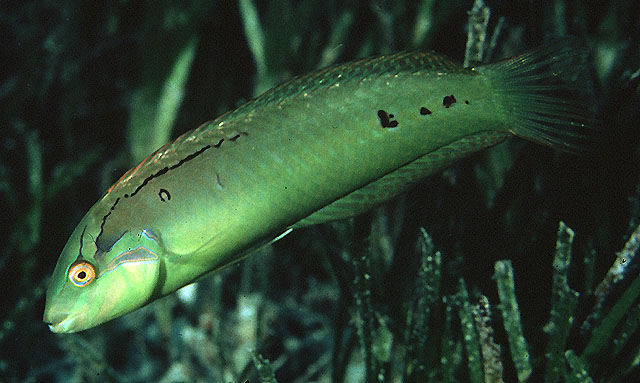
|
Novaculoides macrolepidotus (Bloch, 1791) Seagrass wrasse |
||
| Mameng, Seagrass wrasse, Balaki, Bankilan, Banog, Bungat, Danlugan, Ipus-ipus, Isdang bato, Labayan, Lampalampa, Lubay, Lubay-lubay, Lubayan, Maringyan, Molmol, Mul-mul, Pilo-pilo, Pirat-pirat, Tamago, Tausay, Verde verde | ||

|
|
photo by
Randall, J.E. |
| Family: | Labridae (Wrasses) | |||
| Max. size: | 16 cm TL (male/unsexed) | |||
| Environment: | reef-associated; marine; depth range 3 - 25 m | |||
| Distribution: | Indo-West Pacific: Red Sea and East Africa (Ref. 4392) to New Guinea, north to the Ryukyu Islands, south to Lord Howe Island. | |||
| Diagnosis: | Dorsal spines (total): 9-9; Dorsal soft rays (total): 12-14; Anal spines: 3-3; Anal soft rays: 12-14. A slender species, usually bright green. Juveniles vary from brown to green, usually with a blotched pattern (Ref. 48636). | |||
| Biology: | Found solitary or in small groups (Ref. 90102) in seagrass beds and sandy algal flats of lagoons and mangrove channels. Secretive amongst the vegetation and well-camouflaged (Ref. 48636, 58466). | |||
| IUCN Red List Status: | Least Concern (LC); Date assessed: 12 July 2008 Ref. (130435) | |||
| Threat to humans: | harmless | |||
| Country info: | Known from Badian, Cebu (Ref. 58652); reported from Dauin-Apo I, (Ref. 127519). Also Ref. 1602. | |||